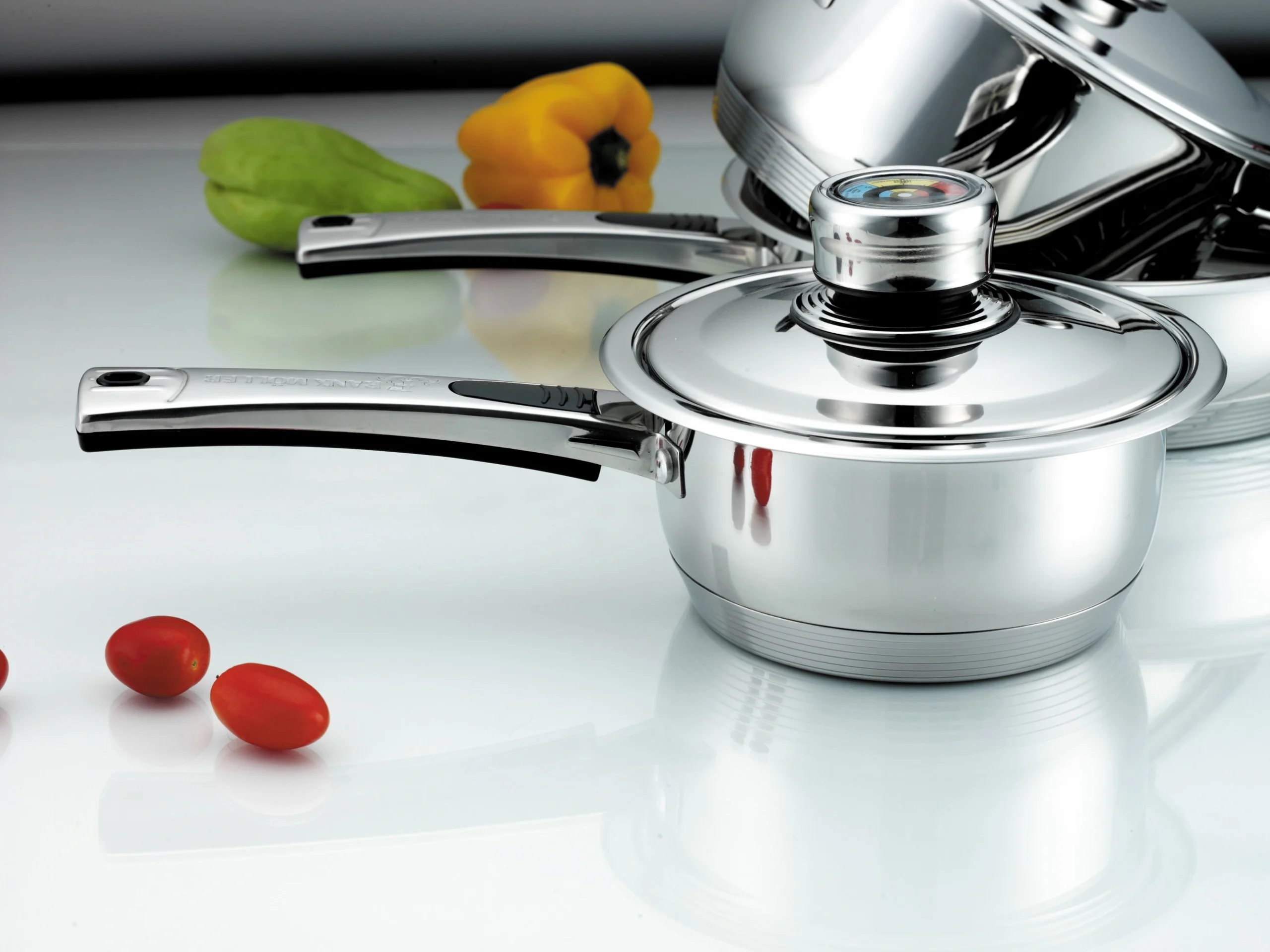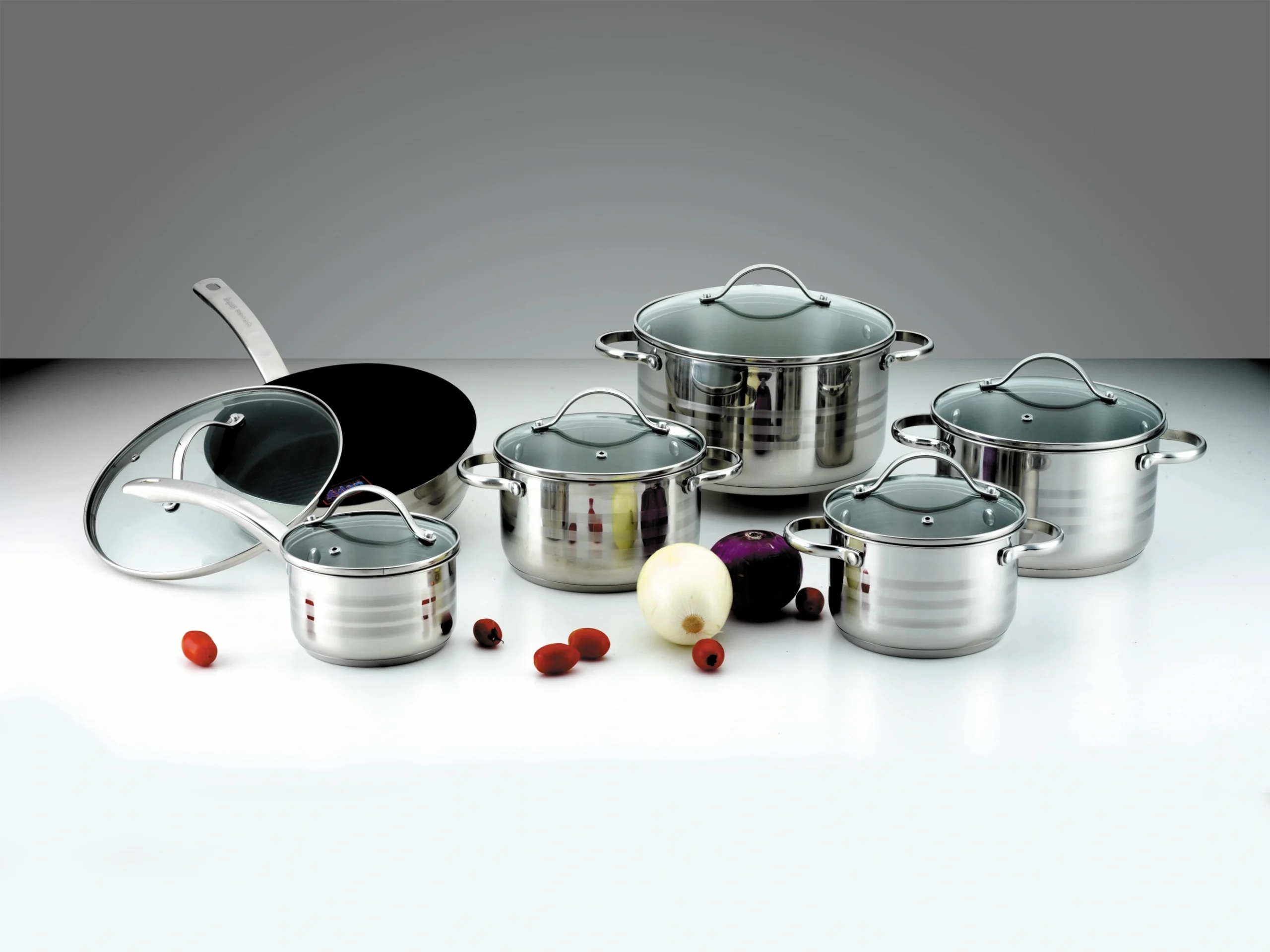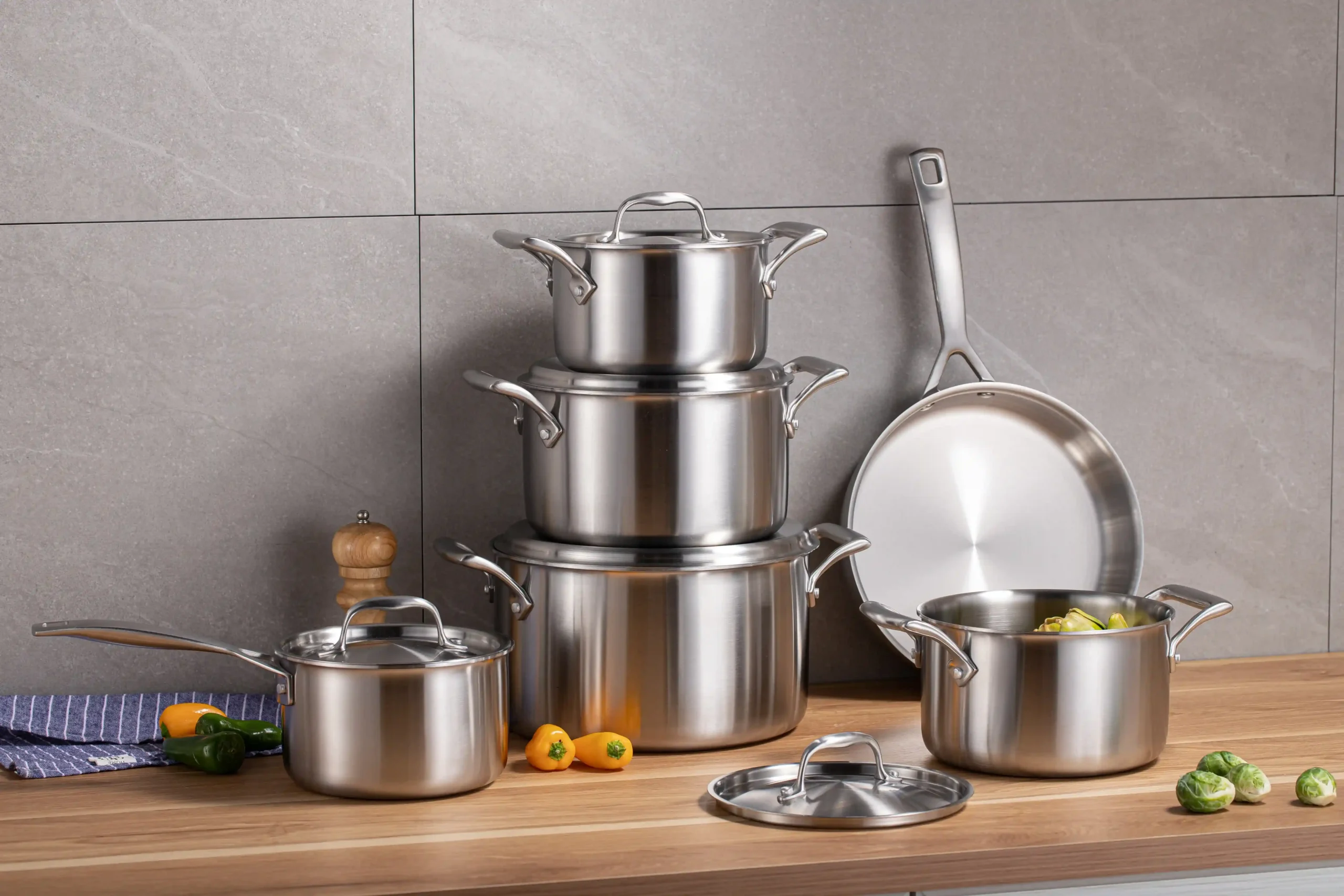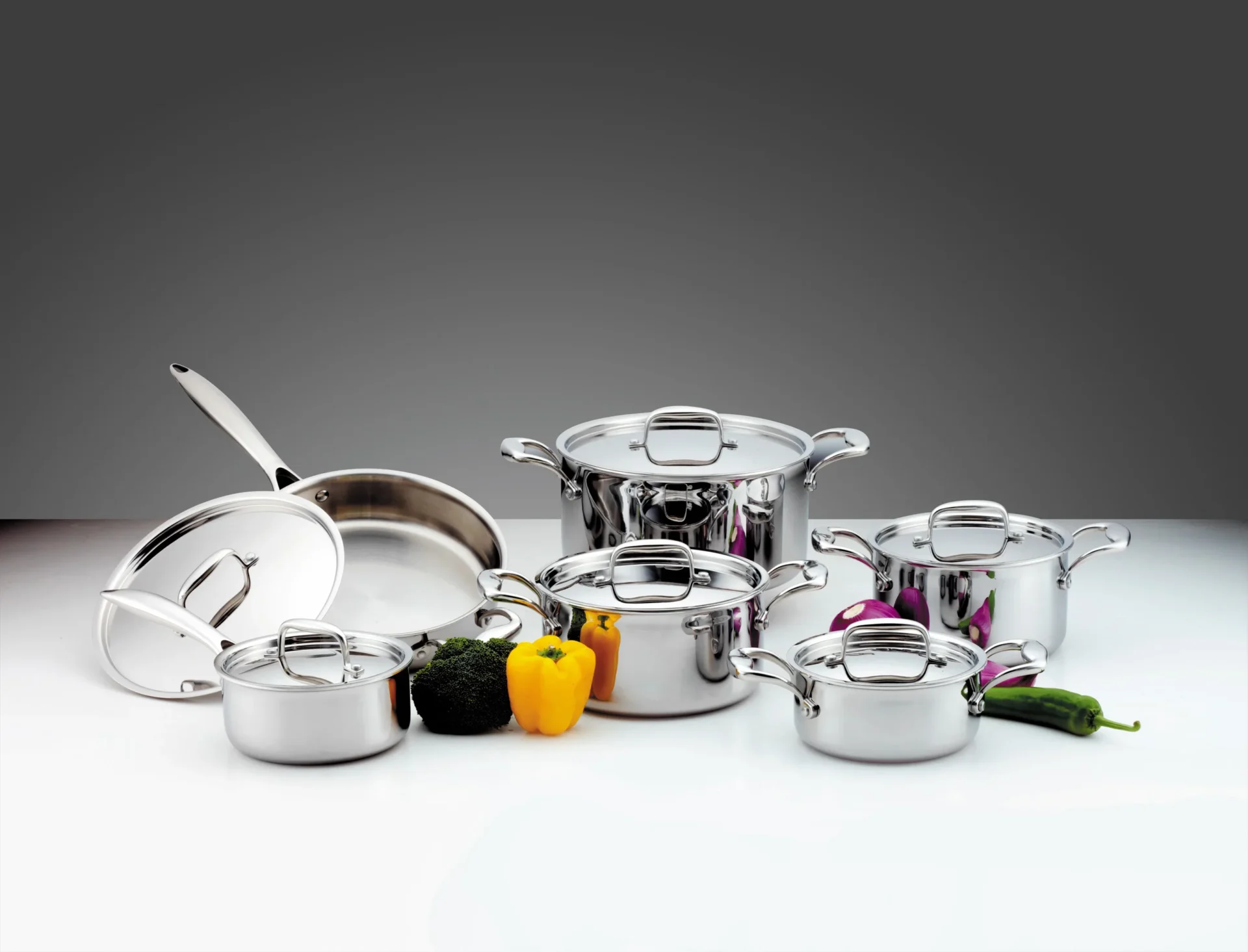
Stainless steel pans—whether a daily-use house frypan,essential stainless steel cookware pots,or part of a premium cooks cookware set —are beloved for durability and safety. But even the highest-quality pieces can develop stains (like burnt food residues) or discoloration (rainbow hues, gray spots) from regular use. The good news? These blemishes aren’t permanent. Below is a professional, step-by-step guide to restoring your stainless steel pans to their original shine, plus tips to prevent future stains—tailored to both home cooks and culinary enthusiasts.
1. Common Stains & Discoloration on Stainless Steel Pans: What Causes Them?
Before cleaning, it’s key to identify the type of blemish—different stains require different solutions. Here are the most frequent issues with stainless steel cookware:
1.1 Rainbow Discoloration
This iridescent effect often appears after high-heat cooking (e.g., searing in a house frypan). It’s caused by a thin oxide layer forming on the steel surface—harmless but unsightly.
1.2 Gray/White Haze
A dull gray or white film typically comes from mineral deposits in hard water, or from using too much detergent. It’s common on stainless steel cookware pots used for boiling water or soups.
1.3 Burnt Food Stains
These dark, stuck-on residues form when food burns onto the pan (e.g., scorched rice in a saucepan). They’re the most stubborn but easy to remove with the right method.
1.4 Rust Spots
Rare on 304 stainless steel (thanks to its chromium content), but small rust spots can appear if the pan is left wet for too long, or if metal utensils scratch the surface.
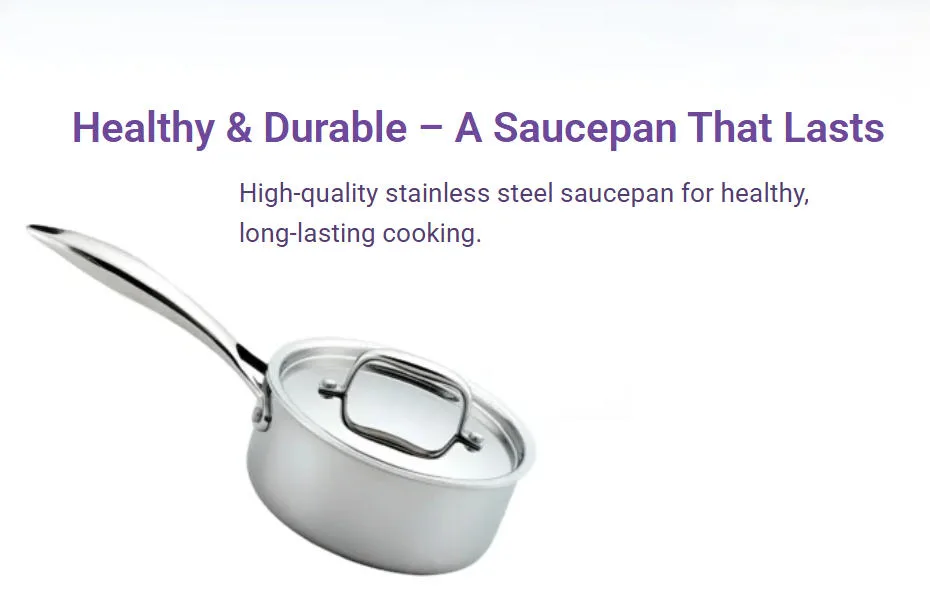
2. Household Ingredients to Clean Stainless Steel Pans: Safe & Effective
You don’t need harsh chemicals—common pantry items work best for stainless steel, preserving its food-safe properties. Here’s what to use:
2.1 Baking Soda (For Burnt Stains & Rust)
Baking soda is abrasive enough to lift tough residues but gentle enough not to scratch the pan. Mix 2-3 tablespoons with water to make a thick paste.
2.2 White Vinegar (For Mineral Deposits & Haze)
Vinegar’s acidity breaks down mineral buildup and cuts through grease. Use it undiluted or mixed with equal parts water.
2.3 Lemon Juice (For Discoloration & Odors)
Lemon juice brightens stainless steel and eliminates odors (e.g., garlic or fish smells from a house frypan). Pair it with salt for extra scrubbing power.
2.4 Dish Soap (For Daily Cleaning)
A mild, non-abrasive dish soap is ideal for regular upkeep—avoid harsh detergents that can strip the pan’s protective layer.

3. Step-by-Step Guide to Remove Stains & Discoloration
3.1 How to Clean Burnt Food Stains (Works for Pans & Pots)
- Cool the Pan First: Never clean a hot stainless steel pan—let it cool to room temperature to avoid warping.
- Soak in Warm Water: Fill the pan with warm water and 1 teaspoon of dish soap. Let it soak for 15-20 minutes to loosen burnt residues (longer for stubborn stains).
- Apply Baking Soda Paste: Spread the paste over the stained area, focusing on burnt spots. Let it sit for 10 minutes.
- Scrub Gently: Use a soft sponge or cloth (never steel wool!) to scrub in the direction of the pan’s grain (this prevents scratches). For stainless steel cookware pots with deep stains, use a soft-bristled brush for the bottom.
- Rinse & Dry: Rinse thoroughly with warm water, then dry immediately with a clean towel to prevent water spots.
3.2 How to Fix Rainbow Discoloration
- Heat a Little Water: Fill the pan with ½ inch of water and bring it to a simmer for 5 minutes—this softens the oxide layer.
- Add Vinegar: Pour ¼ cup white vinegar into the simmering water, then turn off the heat. Let it sit for 10 minutes.
- Wipe Clean: Use a microfiber cloth to wipe the pan in the direction of the grain. The rainbow hues will fade instantly.
- Polish with Lemon: Rub a lemon wedge over the surface, then rinse and dry—this adds extra shine.
3.3 How to Remove Gray/White Haze
- Make a Vinegar Solution: Mix equal parts white vinegar and water in a spray bottle.
- Spray & Let Sit: Spray the solution onto the hazy area (common on stainless steel cookware pots) and let it sit for 5 minutes.
- Wipe & Buff: Wipe with a soft cloth, then buff with a dry microfiber towel to restore shine.
3.4 How to Eliminate Rust Spots
- Make a Baking Soda Paste: Mix baking soda with a drop of water to form a paste.
- Scrub the Rust Spot: Use a toothbrush (soft-bristled) to gently scrub the rust—focus only on the spot to avoid damaging the surrounding area.
- Rinse & Protect: Rinse, dry, then rub a small amount of vegetable oil onto the area to rebuild the pan’s protective layer.
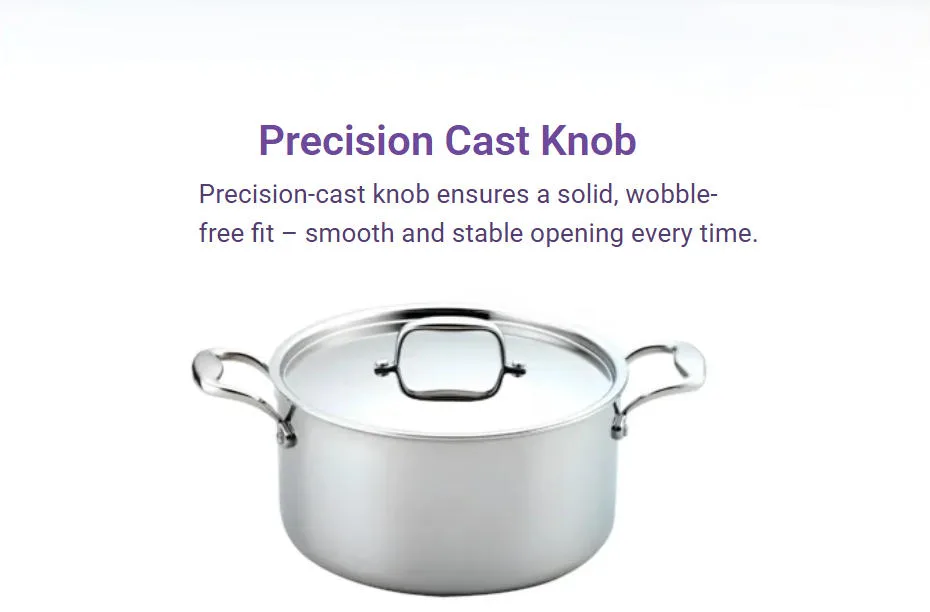
4. Tips to Prevent Future Stains & Discoloration
4.1 Clean After Every Use
Don’t let food sit in the pan overnight—acids (like tomato sauce) can corrode the surface, leading to stains. Even a quick rinse after cooking goes a long way.
4.2 Dry Immediately
Water spots are the first step to discoloration. After washing, dry your house frypan or stainless steel cookware pots with a lint-free towel right away.
4.3 Avoid High Heat Unless Necessary
High heat is the main cause of rainbow discoloration. Use medium heat for most cooking tasks (e.g., frying eggs in a frypan, simmering soup in a pot).
4.4 Use the Right Utensils
Metal utensils can scratch the pan’s surface, making it prone to stains. Opt for silicone, wooden, or nylon utensils—safe for all cooks cookware set pieces.
4.5 Store Properly
When storing your cooks cookware set, place a soft cloth or paper towel between pans to prevent scratches. Hang stainless steel cookware pots by their handles (if possible) to avoid pressure on the bottom.
5. Special Care for Cookware Sets
If you own a cooks cookware set, consistency is key—follow the same cleaning rules for every piece:
- For frypans: Focus on the cooking surface (avoid scratching the non-stick-like finish of well-maintained stainless steel).
- For pots: Pay extra attention to the rim and lid—these areas collect food residue and grease.
- For lids: Clean the lid’s interior (where steam condenses) with vinegar to prevent mineral buildup, then dry to avoid rust on the hinge.
6. Conclusion
Stainless steel pans—from a humble house frypan to a full cooks cookware set—are an investment. With the right cleaning methods (using pantry staples!) and regular care, you can keep them stain-free, shiny, and safe for years. Remember: always scrub with the grain, avoid harsh tools, and dry immediately. By following these steps, your stainless steel cookware pots and pans will look as good as new, no matter how often you use them. For home cooks and culinary lovers alike, a well-maintained stainless steel set is the backbone of a functional, stylish kitchen.

